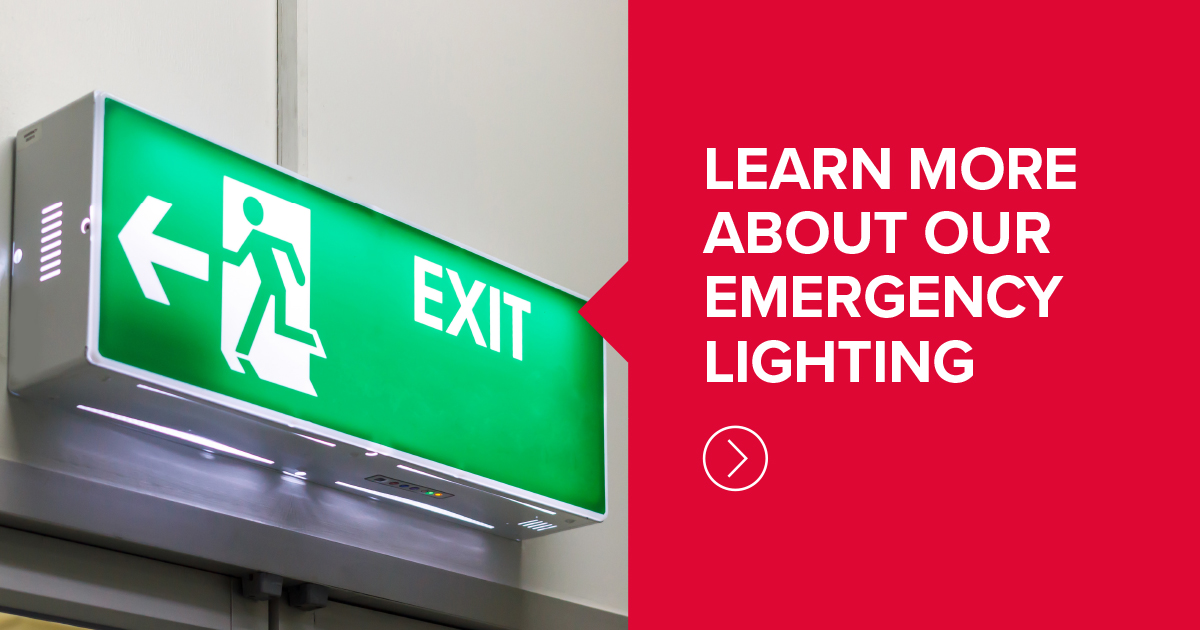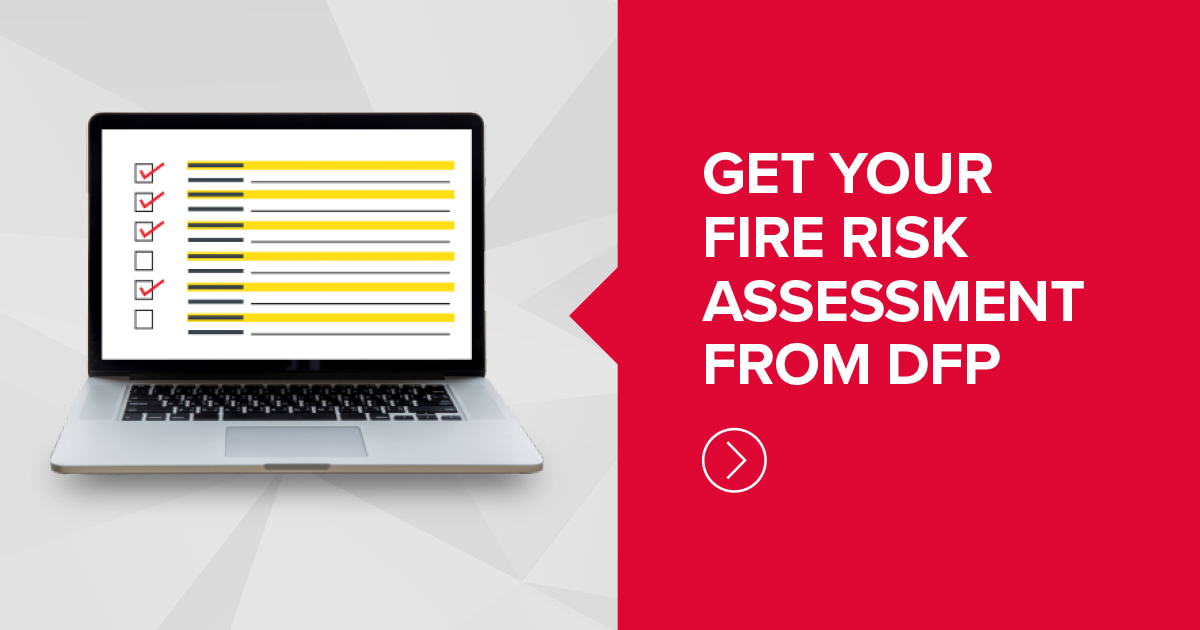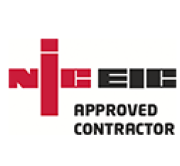Industry Articles

Moving Premises? Here Are 5 Fire Safety Considerations
When you’re moving into new premises or refurbishing a current one, there are a million and one things to consider. Fire safety usually isn’t at the forefront. The allure of new space and prospective design opportunities (Where will the microwave go?! Is yellow really the most stimulating colour for proactivity?) are more appealing than rules and fire safety regulations.
Thinking about fire safety alongside issues such as overheads, tax, employee status and timescales can also seem like just another inconvenience on the list. But ‘inconvenience’ has a higher risk than all of the other issues mentioned.
With this in mind, what does need to be considered for your new premises and how can you make your move easier? In this guide, we’ll outline five key fire safety points to consider when moving premises.
1) Put Fire Safety firmly on your agenda right from the start!
Before you start pulling a building apart, it is important to understand the existing fire precautions. You should plan to retain the fire precautions within the building, and possibly upgrade at the same time.
‘Fire precautions’ includes fire doors, escape routes, fire alarms, emergency lighting, fire extinguishers and so on! Look out especially for fire compartments since it is highly likely that refurbishment work will impact the fire compartments. Check early whether any alterations will require Building Control approval, because this will certainly entail some fire safety requirements.
If Building Control approval is not required, the onus is firmly back on you, the “Responsible Person”, to ensure that any changes do not negatively impact the existing fire precautions, and furthermore that the fire precautions are adequate for any change in the use of the building.
In our experience, it is often minor changes that trip people up. The installation of a new viewing window in a fire wall; the addition of a new door on an escape route, the blocking up of a doorway which seems unnecessary, or the modern trend to install glass walls instead of traditional plasterboard walls. People forget to ask whether this change will impact on the fire safety, and nobody picks it up until the work is completed and a Fire Risk Assessor comes around.
The other common oversight is in relation to fire stopping. When you put a hole in a fire wall to run new services, you need to ensure that it is suitably fire stopped afterwards. This may be just intumescent mastic, or it may require more sophisticated intumescent solutions, it all depends on the size of the hole and what you are putting in the hole.
But the key question is, which walls in your building are meant to be fire walls? If you don’t know, you need to find out before you start alterations.
Our advice is to involve a fire safety professional as early as possible in the planning process. You can then ensure that you are planning for compliance from the outset, and do not risk costly retrospective works to put things right.
Once your new space is ready for occupation, you will need to ensure that a fresh Fire Risk Assessment is carried out to double check that everything is in place as expected to protect your most important asset – your people.
2) Check fire extinguishers
According to Home Office statistics, every year there are more than 100,000 fires in buildings, and around 500 people lose their lives. Fire extinguishers are one of the most accessible forms of fire safety and with some very simple instruction and the correct knowledge any employee or team member can use one.
When you move into new premises, there’s a high likelihood that there will already be fire extinguishers present. However, you should not assume that these fire extinguishers are fit for purpose without having them inspected.
Fire extinguisher maintenance is carried out by a qualified engineer who will evaluate any damage to the fire extinguisher or any issues that may cause it to fail. By having a fully working fire extinguisher, you or your employees can tackle small fires before they spread and cause costly damage. That’s why it’s essential you book an appointment with a fire safety provider.
Not confident you or your team members could tackle a small fire? At Dorset Fire Protection, we provide hands-on fire safety training that is engaging and insightful. We want to inspire everyone to be self-assured when it comes to their fire safety awareness.
If your new workspace does not have fire extinguisher points and equipment already fitted (or you are expanding or refurbishing to cover a bigger area), then you will need to make an investment.
However, even if your workspace does have extinguishers, it’s also important that they are positioned conveniently throughout your premises for quick emergency response.
3) Ensure maintenance on all other fire safety equipment
Fire safety equipment has the potential to save lives during an emergency. Fire alarms are considered the first indicators of an issue and early awareness gives your staff and/or residents more time to react while the risk is in less developed stages.
Why risk your fire alarm failing and hindering the chances of individuals to escape safely? For places such as schools, specialist facilities or residential homes, these early warnings are even more important due to the nature of the individuals that need special assistance.
Having fire doors that are accessible and functional is also imperative to your fire safety plan. Fire doors are manufactured to withstand the spread of fire for a given period of time, usually a minimum of 30 minutes. This allows time for inhabitants of a building to escape.
With a range of maintenance packages to choose from, Dorset Fire Protection can provide design, installation and maintenance all under one roof so that you’re not struggling to pull different people together to do something we can do in one. And with a unique budgeting management scheme.
4) Check escape routes
During a move or a refurbishment, walkways and spaces can become filled with miscellaneous items that haven’t found permanent placement. Fire doors and escape routes should always be kept clear of hazards and debris so that people to have the smoothest, fastest exit they can.
New buildings can also be very unfamiliar places. Even if you had your fire escape procedure down to a regimented drill in your old place, the new premises or the refurbishment will totally change how in-tune you are.
It’s important to familiarise yourself and any others that use the space with their closest safe exit and to not just write it down but to physically walk the chosen route to increase familiarity.
If your premises involves individuals that require assistance then it’s even more important that everyone is confident about their role during an emergency. Are your escape routes suitable for everyone? How will you prepare to assist wheelchair users during an emergency when the lift is not available?
Preparation is the best safety equipment for making sure fires don’t even have the chance to start.
Being prepared also falls in accordance with the Guide to the Safety, Health and Welfare at Work Act 2005, which outlines every employer must identify the hazards at the place of work. The guide directly addresses that consideration is needed for young or inexperienced workers, new and expectant mothers, nighttime workers and those who work alone.
A fire drill or test doesn’t take long but practise and preparation will save you a lot.
If you’re not sure how to test the routes or your fire safety equipment regularly, take a look at our video resources. Educating yourself on how to check a fire door or how to perform a monthly check of escape routes will help to feel prepared in the early stages of moving into your new business.
5) Emergency lighting
Even if you’re familiar with the new escape route, there may be a time when you can’t clearly see it. Or, in the case of a commercial property or even an office, people who aren’t well-practised might be on the premises.
Clear and efficient emergency lighting helps to increase the chance people have of leaving a building quickly and with the least panic during an emergency. The Regulatory Reform (Fire Safety) Order 2005 states that emergency routes and exits must be indicated by signs and emergency routes/exits requiring illumination must be provided with emergency lighting of adequate intensity in the case of failure of their normal lighting.
‘Adequate intensity’ implies that emergency lighting will be working to its full capability to give the best illumination coverage possible. Unmaintained lighting can offer reduced coverage and is therefore inadequate for use.
If you are refurbishing part of your premises then you must examine what kind of emergency lighting is needed. You must also be sure that the new area has adequate lighting and functions properly. Being able to test your emergency lighting on premises will help you to stay prepared and confident in the face of a problem.
In a new premises or building, it is so difficult to gauge the effectiveness of the equipment that’s already there and it’s a bad idea to simply just ‘trust it does’. Take the checks into your own hands or contact a professional fire safety service for that extra peace of mind.
Is it an escape route? Then it will need directional escape route lighting at every change of direction, wherever their in an adjustment in level and other standards in compliance with the Code of Practice for emergency lighting – BS 5266-1:2016.
Is it an open area of 60m2 or bigger? Then your lighting needs to provide sufficient coverage to reduce panic and increase vision.
Is your new area a high risk area? Then your lighting must work at a minimum of 10% of its normal rate and come on within 0.5 seconds of the main lighting going down.
The other alternative is that the previously installed emergency lighting in your new premises doesn’t meet your own standards. With energy consumption a concern of many companies, Dorset Fire Protection will help to provide a replacement piece to save money.
How Can Dorset Fire Protection Help?
We know that moving to new premises or expanding your own is a difficult task with its own set of challenges. That’s why we aim to make your process as smooth as possible. We provide maintenance for all fire safety equipment from emergency lighting to fire extinguishers in a manageable, budget-friendly way.
We also offer complete PAT testing so that you can ensure all your electrical equipment works how it should, reducing the risk of fire in the future. So if you need sound, pragmatic advice, reliable, consistent service, and cost-effective compliance, choose Dorset Fire Protection.
Have you considered our fire safety maintenance packages for your workplace? Contact Dorset Fire Protection on 0330 7000 555 or email [email protected] for the best solution.








